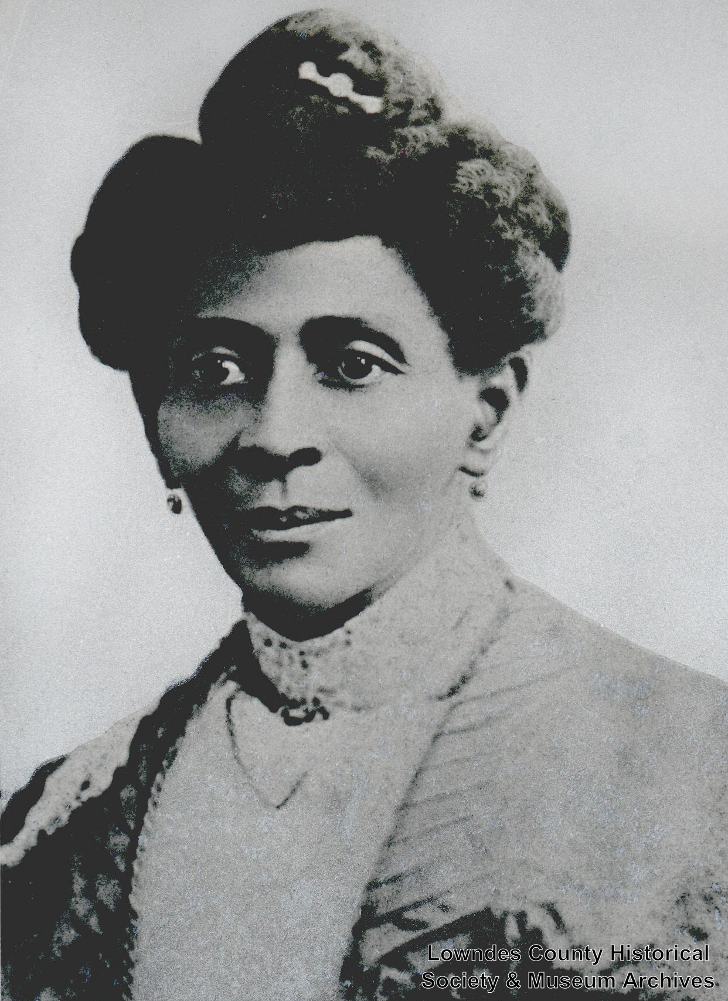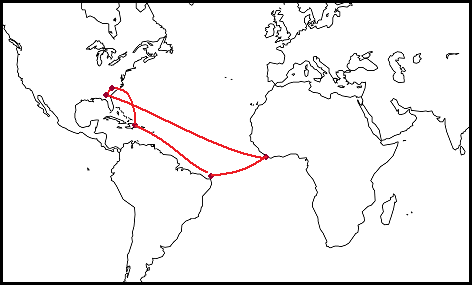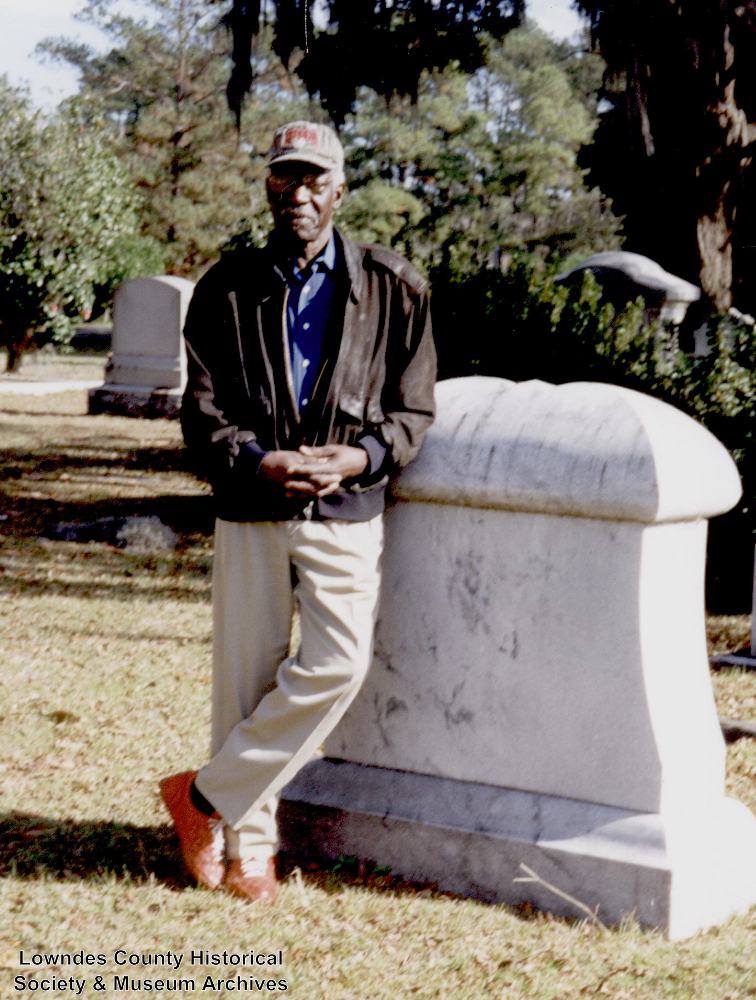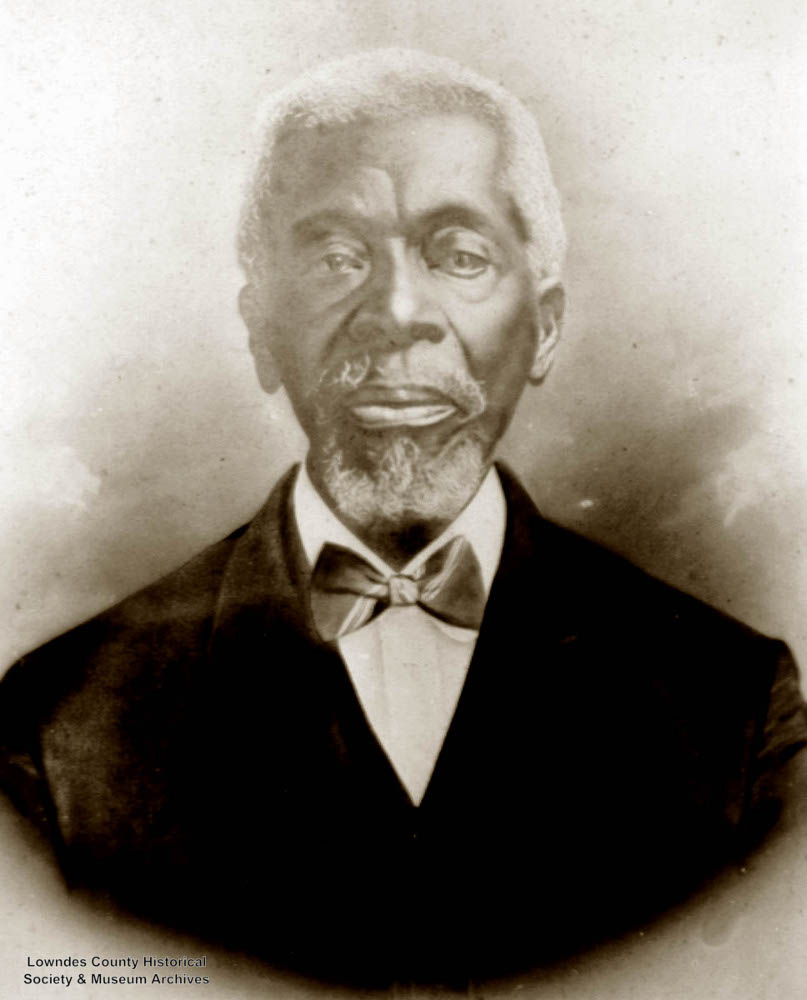Between 1800 and 1860, “King Cotton” came to South Georgia. With the wealth of the cotton industry came vast numbers of slaves to provide the manpower for the growing cotton plantations. Of the nearly four million slaves in America at the time about 2,400 lived in Lowndes County. These slaves toiled in servitude, working long hours in the fields and pine forests of the region. In 1996, Valdosta became the first city to dedicate a memorial to mark the sacrifices of its unnamed slaves. The monument in Sunset Hill Cemetery marks the graves of at least 14 unknown slaves buried there along with several unknown soldiers from the 103rd Colored Infantry.
Liberia
The American Colonization Society was founded in 1816 to help move freed slaves to a new home in Western Africa. The first boatload of emigrants left for Africa in 1820. The nation they established in Africa was called Liberia. Thousands of African Americans made the journey to Liberia before the end of the century. They struggled to forge a new country in a harsh environment.

Laura Yerby
In 1872, Laura Yerby joined over 100 other Lowndes County freedmen who moved to Liberia. She was only 14 years old. Yerby’s journey from Lowndes County, Georgia to Monrovia, Liberia spanned nearly 5,000 miles across the Atlantic Ocean. Escaping persecution at home, the freedmen faced many hardships in their new country. Yerby returned to Lowndes County late in her life.
That same year, Laura Lane, a former slave, left Valdosta for Liberia at 16 years old. She too had an arduous return trip home. On her way back, she saved for passage and got from Africa to South America, she became handmaiden to a Jewish merchant’s wife and accompanied them to Cuba. After a sojourn there she made passage to Savannah and then returned to Valdosta. The Lowndes County marriage records show a Laura Lane marrying Matt Pritson in December 1880.

Map of Laura Lanes Journey from Liberia to South American, Cuba, Savannah, Georgia, to Valdosta.
Unknown Slaves Memorial
The slaves officially received their freedom with the passing of the 13th Amendment and the end of the Civil War. The U.S. government attempted to ease the transition of integration in the years immediately following the war. The Freedmen’s Bureau, under Gen. O.O. Howard, was developed to help the freed slaves gain an education and economic opportunities, while Union troops occupied Southern cities to protect the rights of the newly freed slaves. Reconstruction ended in 1877 with the removal of the last federal troops from the South. Despite the federal government’s actions, freed African Americans would see many of the rights gained during this time lost over the next decades to economic hardships and institutionalized segregation.

Melvin Nelson
Melvin Nelson was the supervisor at Sunset Hill Cemetery and worked there for 44 years. With the help of local residents, Mr. Nelson discovered the unmarked slave graves at the cemetery. His efforts helped secure the area for the monument dedicated in 1996. He was a respected member of the Lowndes County community and a friend to all who visited the cemetery.
Reconstruction
In 1863, President Abraham Lincoln authorized the enlistment of African-American troops in the United States army. The units were segregated and commanded by white officers. The 103rd U.S. Colored Infantry Company G was sent to Valdosta in 1865 during the reconstruction period. As a major rail center, the troops were assigned to maintain stability in the region and protect the rights of the newly freed slaves. They remained in Valdosta for the following year with mixed results. The accompanying photograph is actually of the 104th U.S. Colored Infantry who were stationed in nearby South Carolina.
Jacob E. Enos established the first black school in Valdosta known as the Westchester Freedman’s School with the assistance of the Freedmen’s Bureau in 1868. Enos was also the first African American postmaster in Valdosta by 1869. The school struggled through lack of funding and political opposition, but Enos continued to teach the newly freed slaves with help from other educators such as Rev. Charles Anderson. Anderson also established Macedonia First Baptist Church and became a man of great influence in Valdosta’s history.

Rev. Charles Anderson
Reverend Charles Anderson was one of the first teachers of black students in Valdosta and also the founder of the Macedonia First Baptist Church after the American Civil War. Anderson was a man of great influence in Valdosta’s history and an inspiration to all. A former slave from Savannah and an ordained minister, Reverend Anderson came to Valdosta in the I860s . In 1866 he organized Macedonia First Baptist Church. When lumber became available from the old Troupville Baptist Church, Reverend Anderson purchased the lumber for $ 130 earning the money as a laborer. With this lumber he constructed a church building for his congregation. His ingenuity and willingness to work for what he believed in led not only to one of Valdosta ‘s first Black churches, but also to the first free school for Black children.
